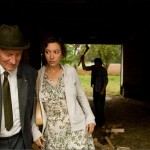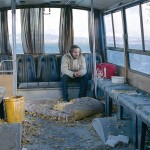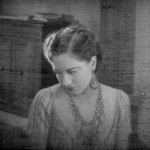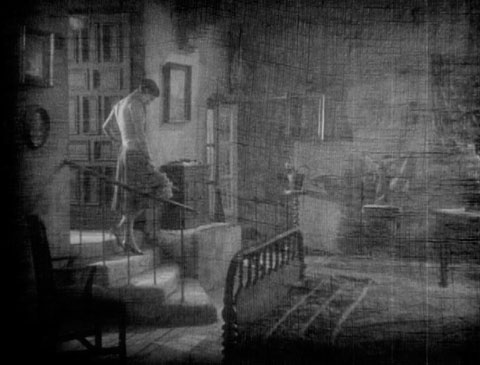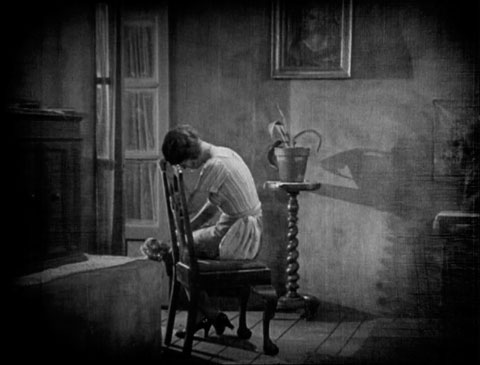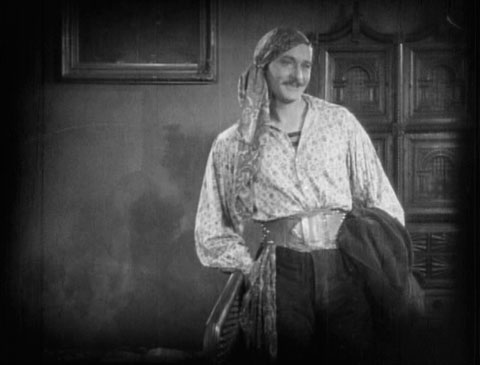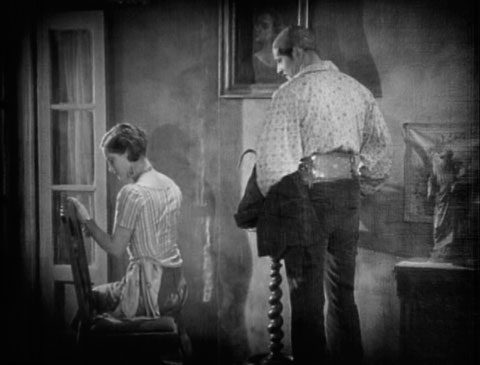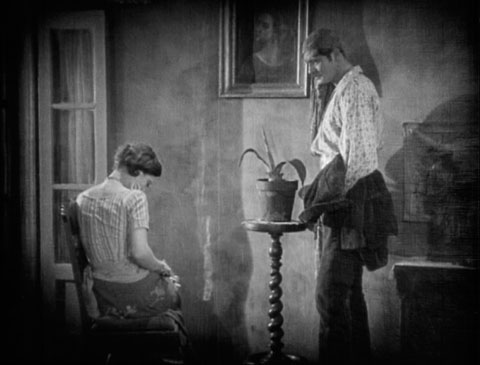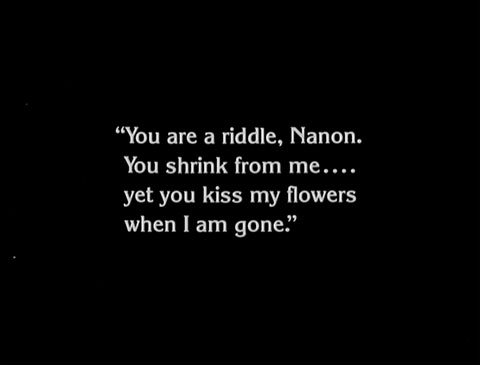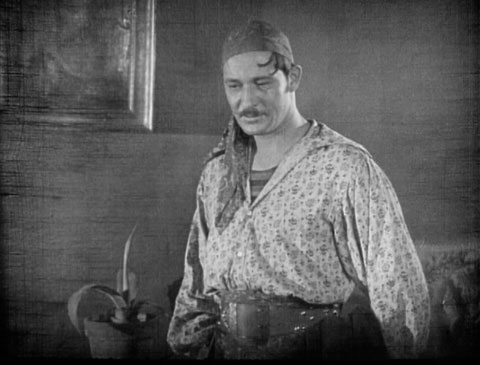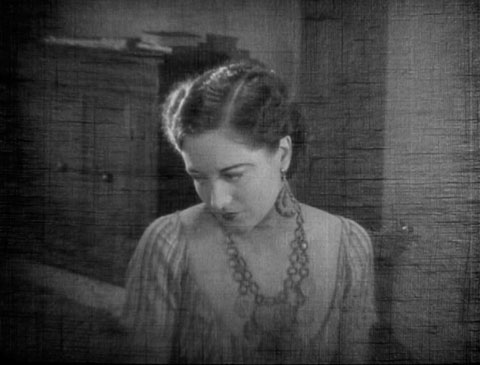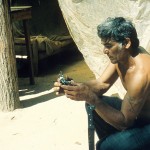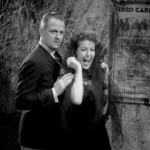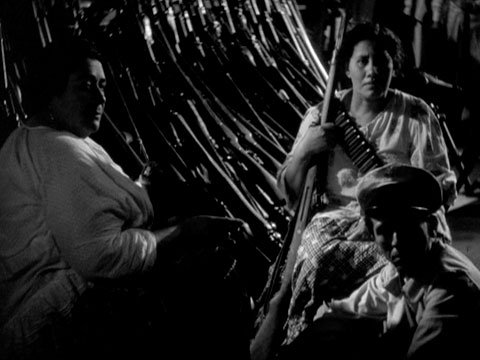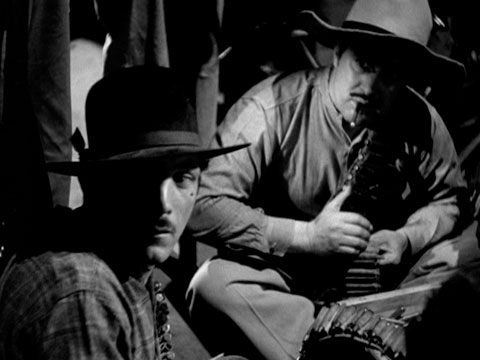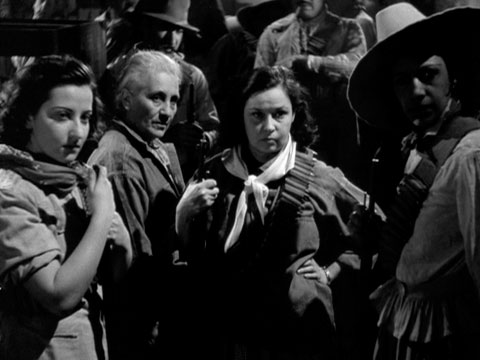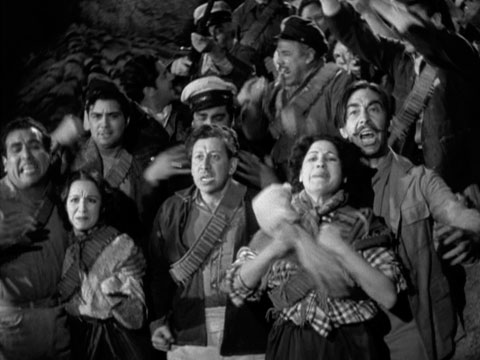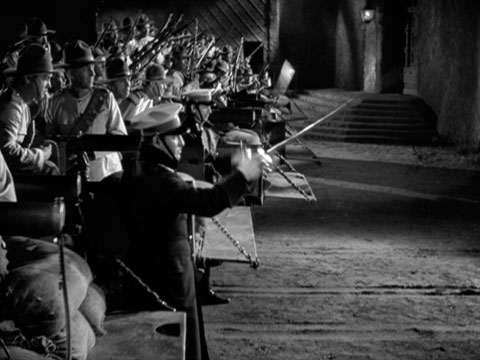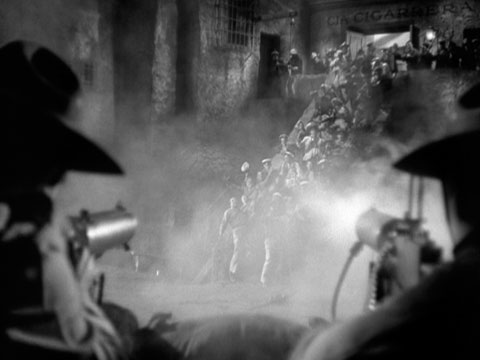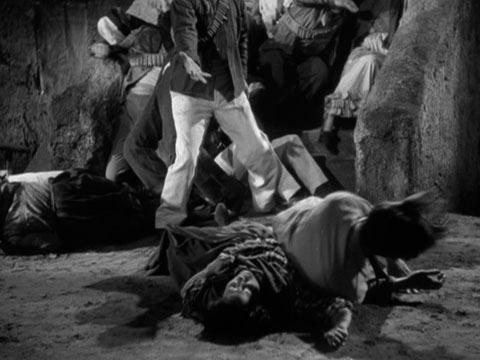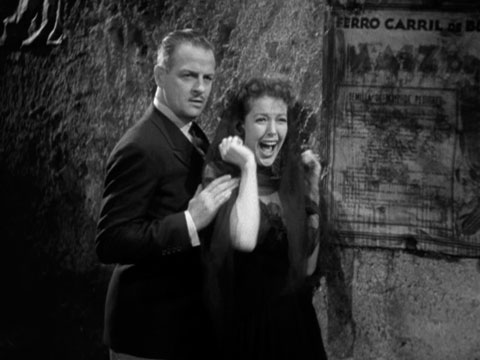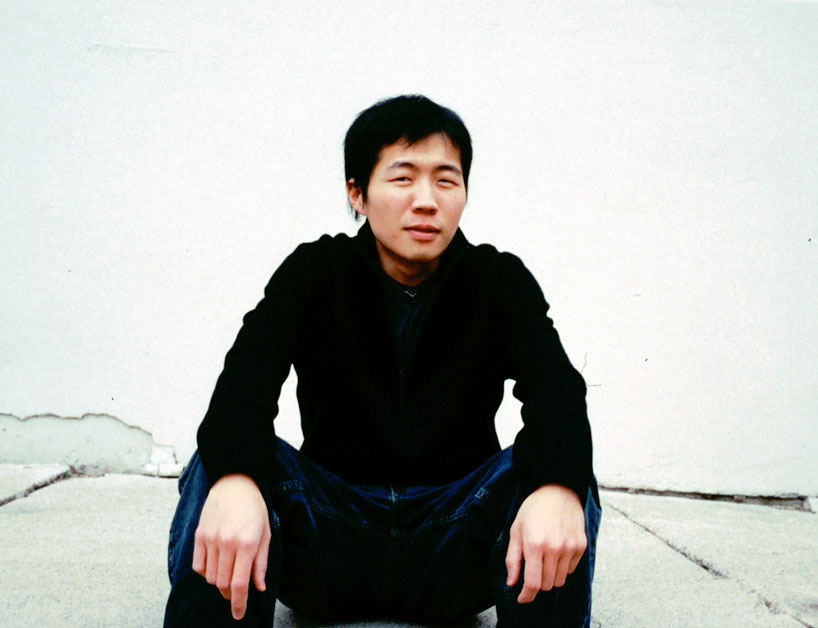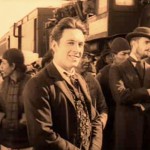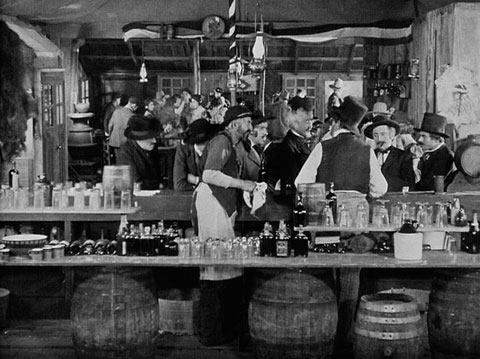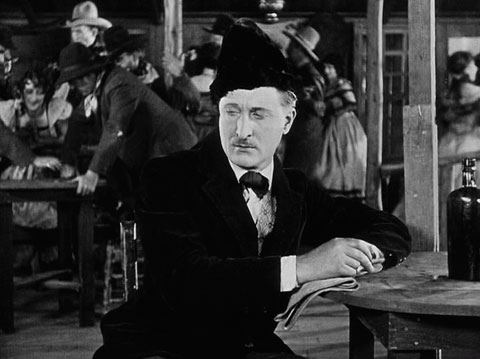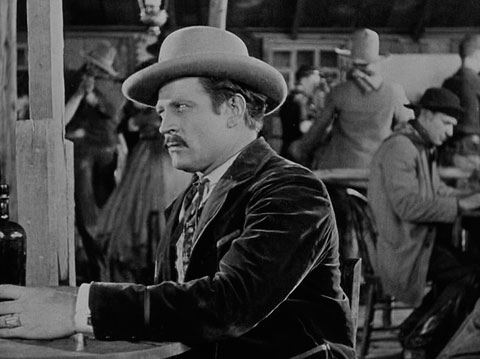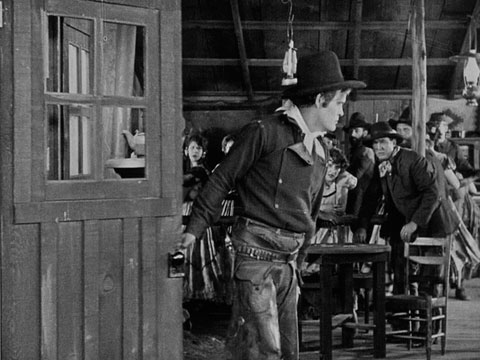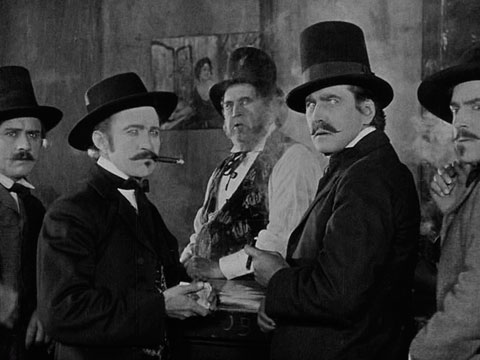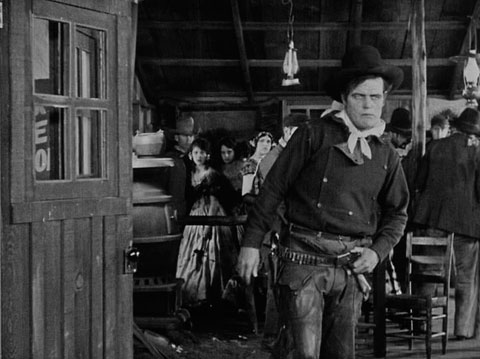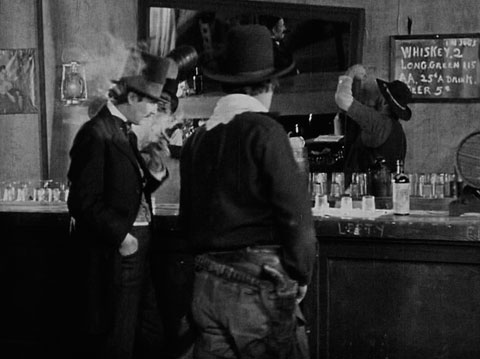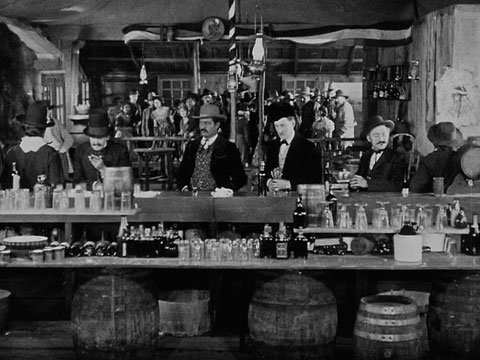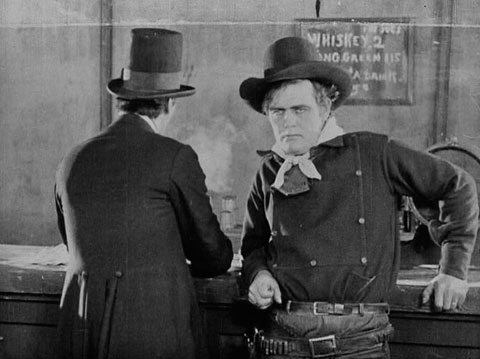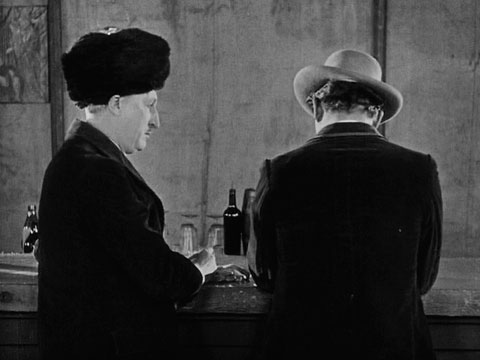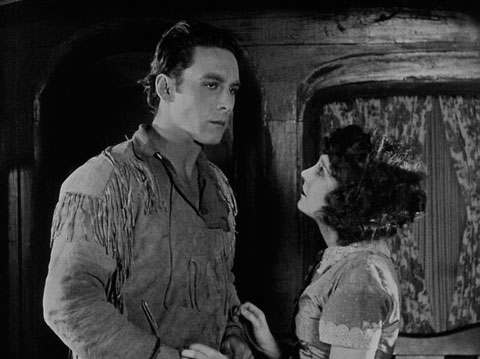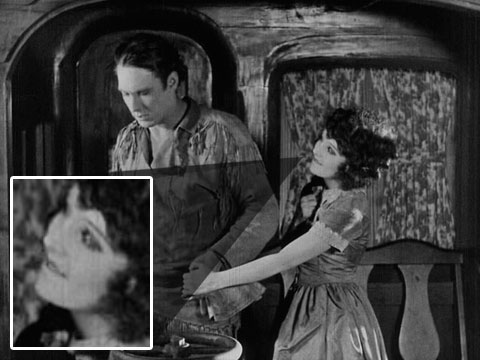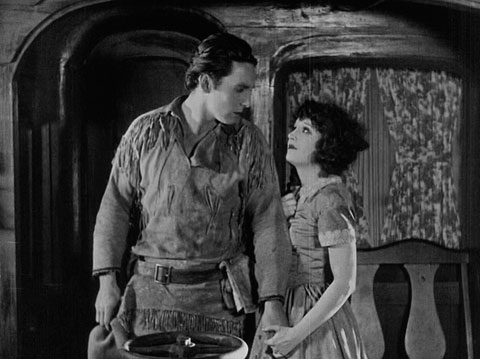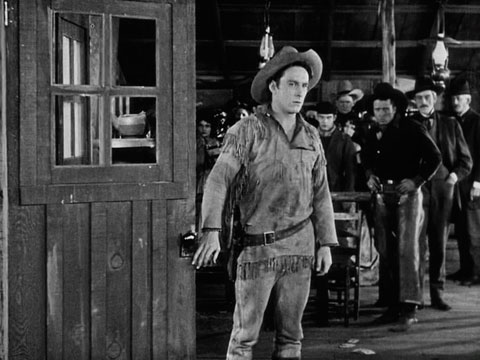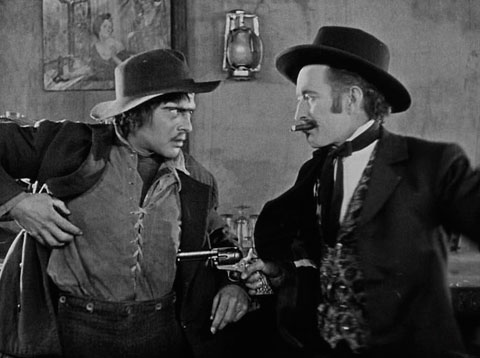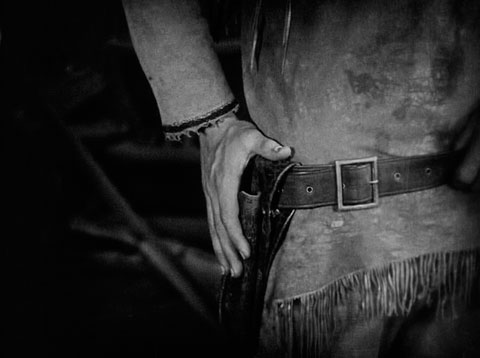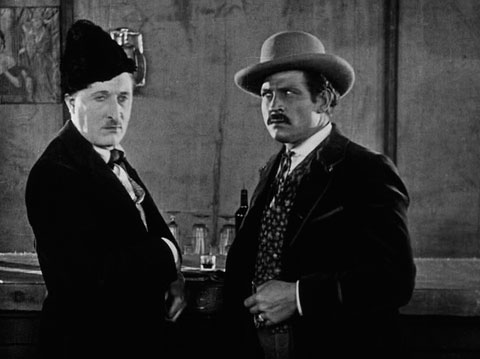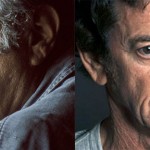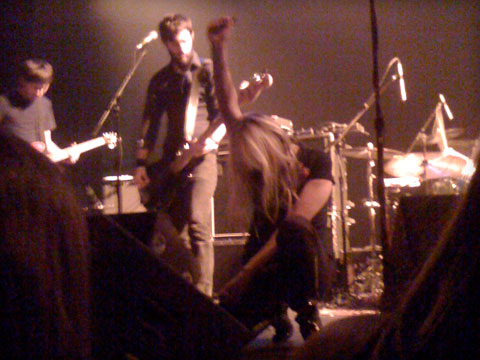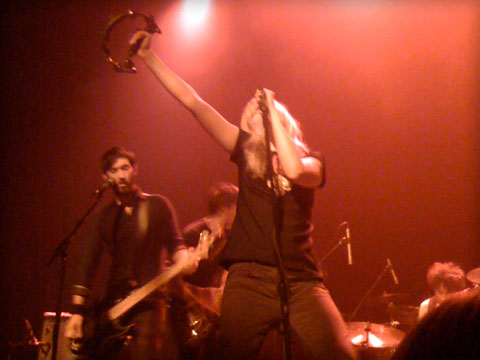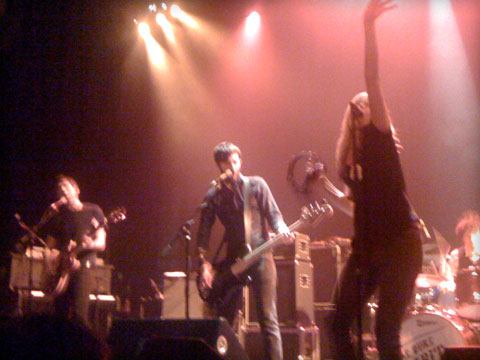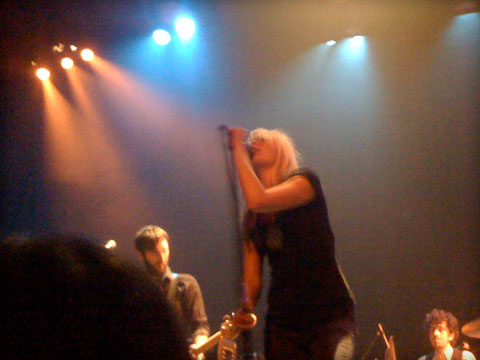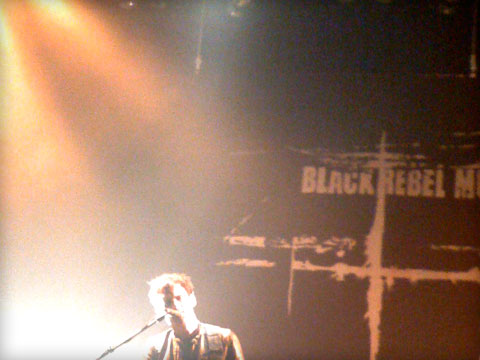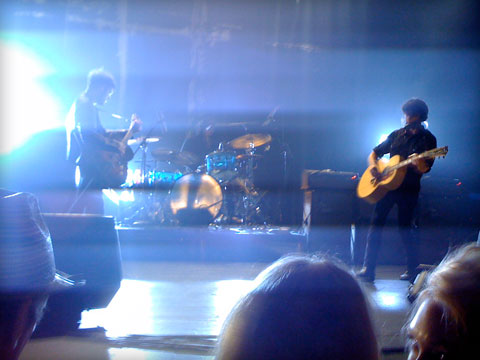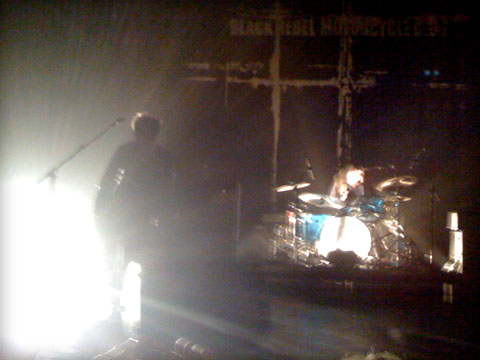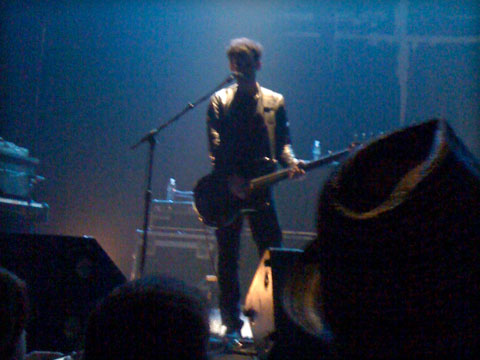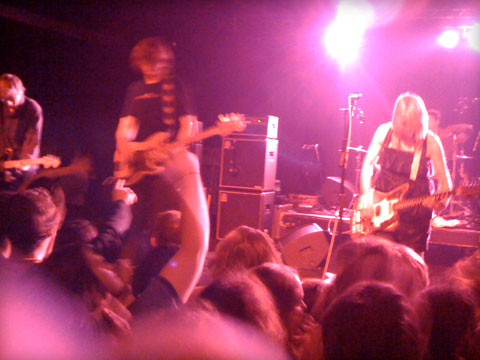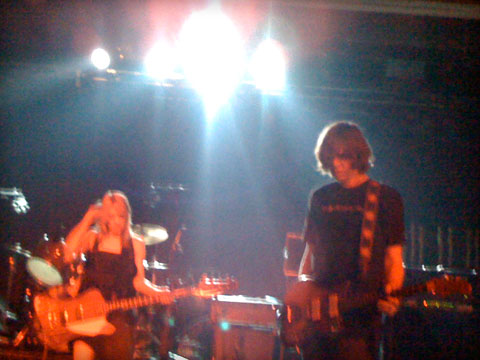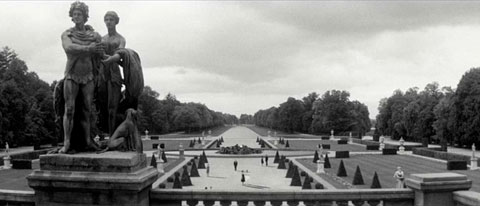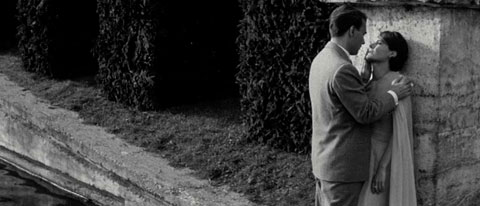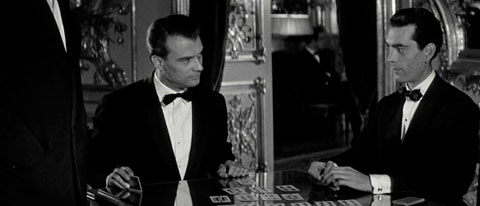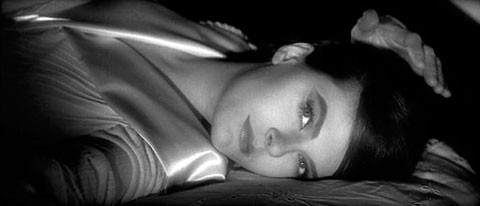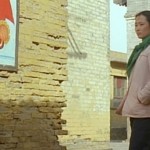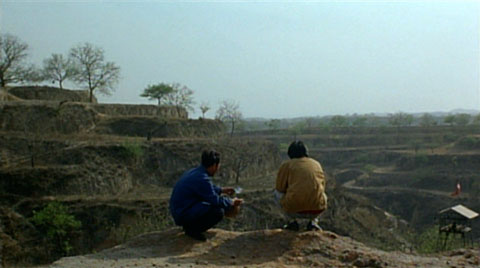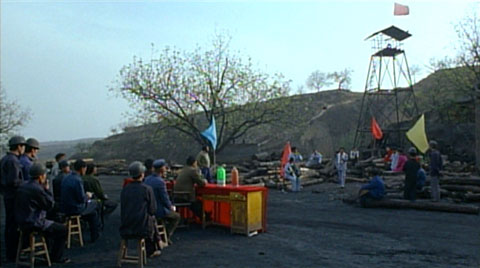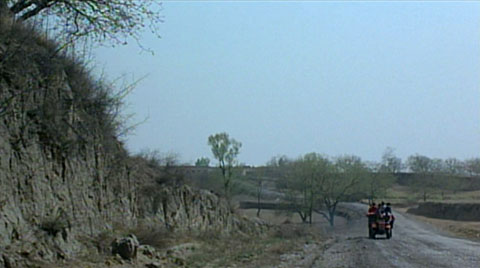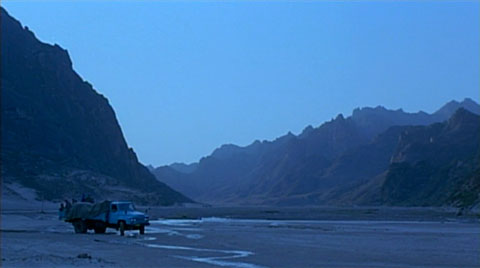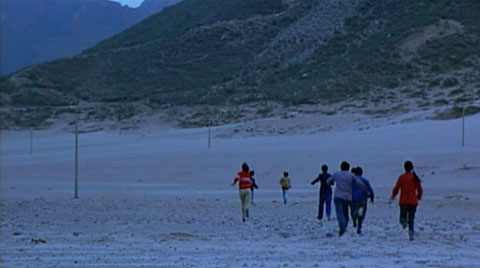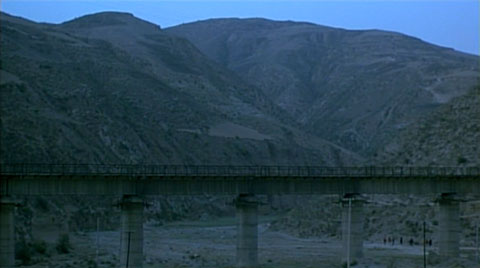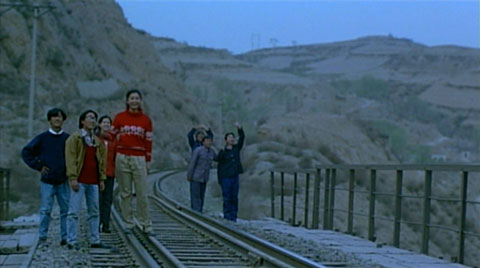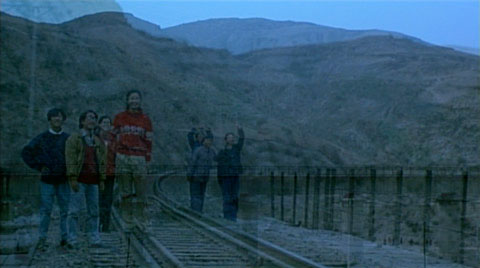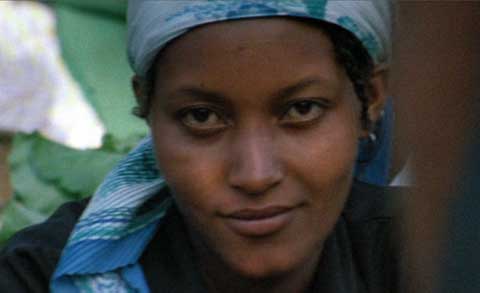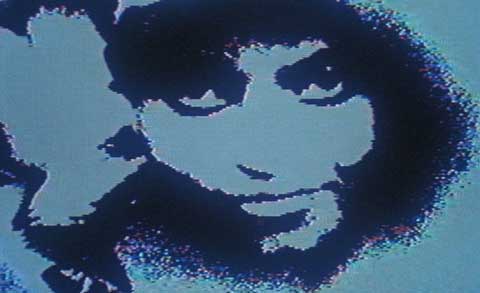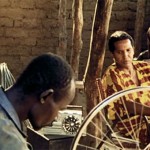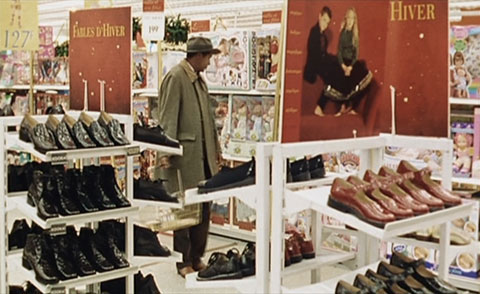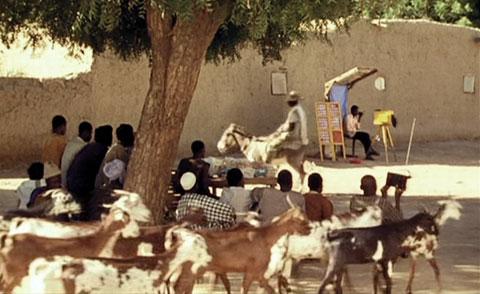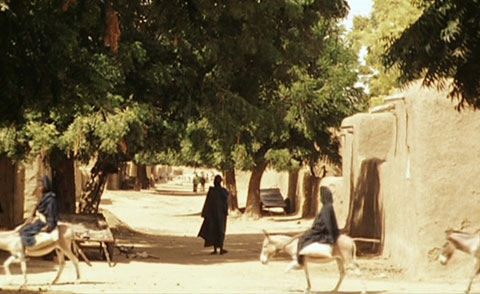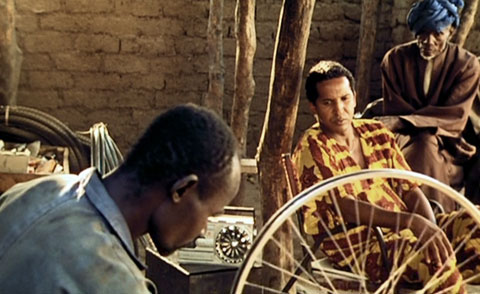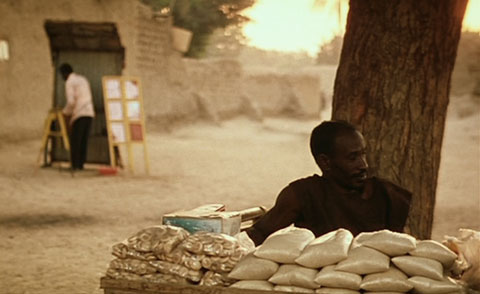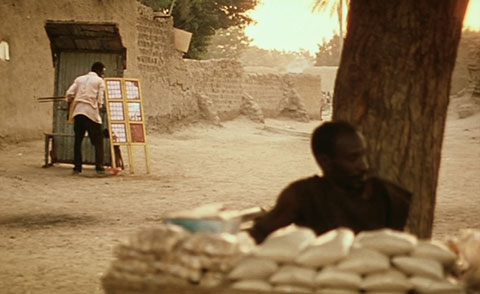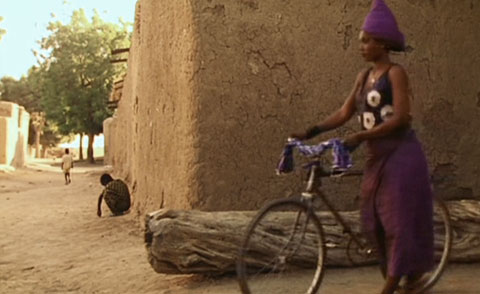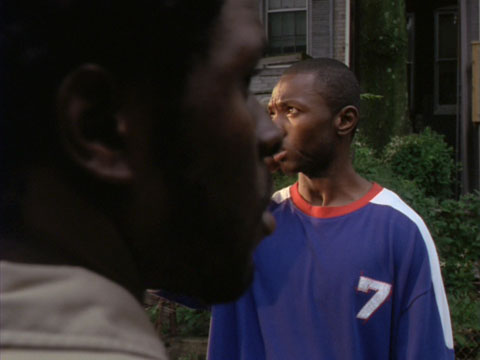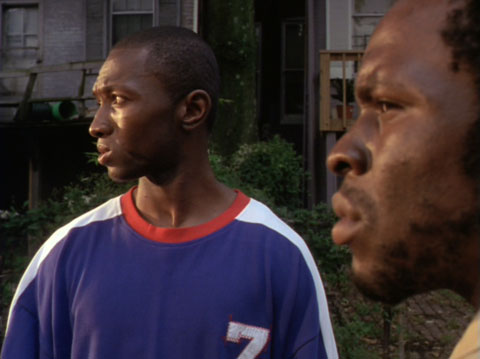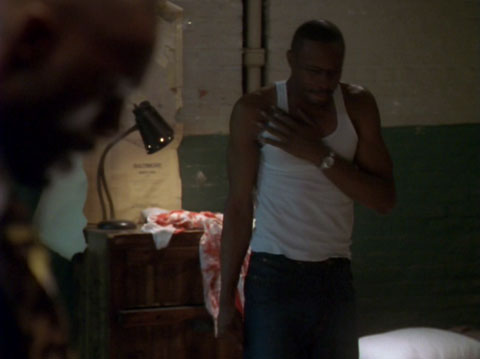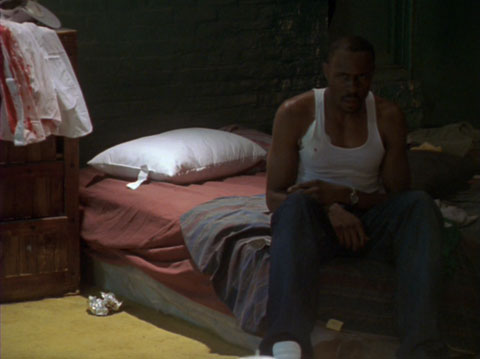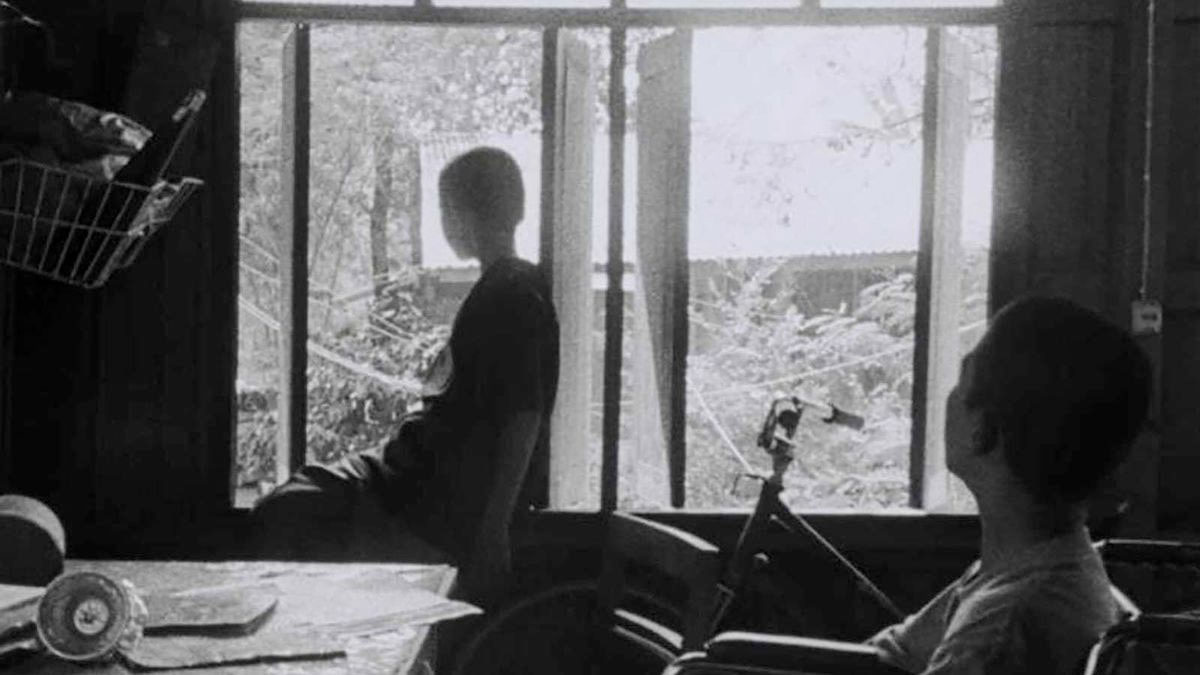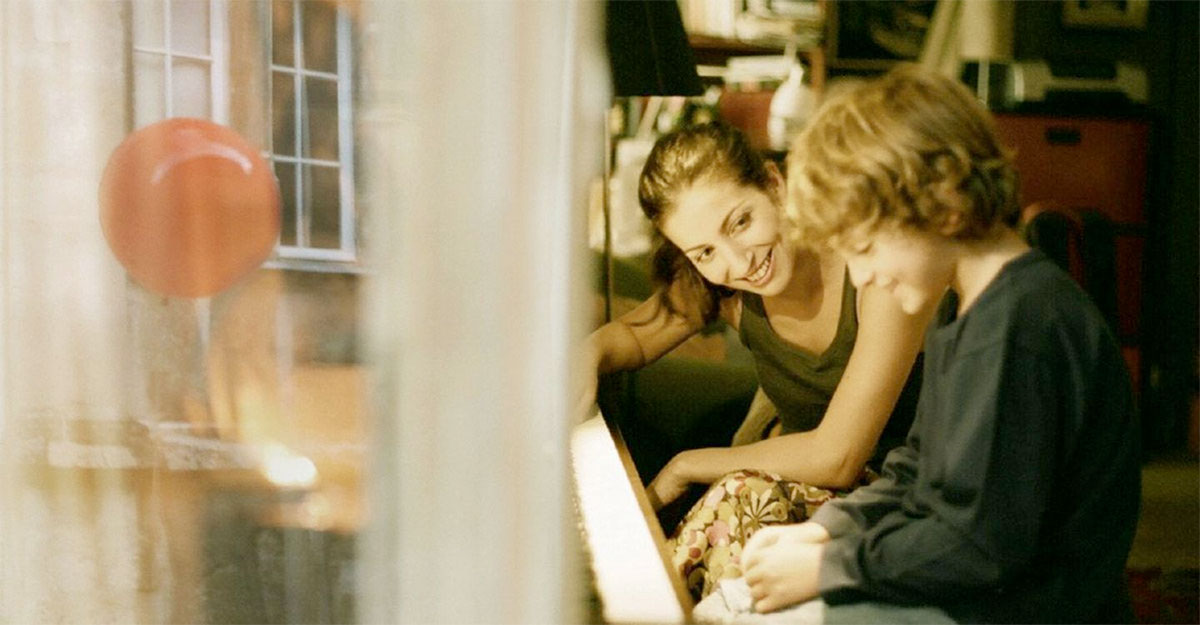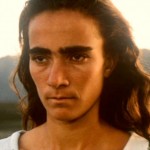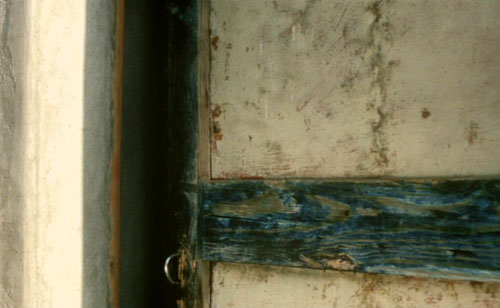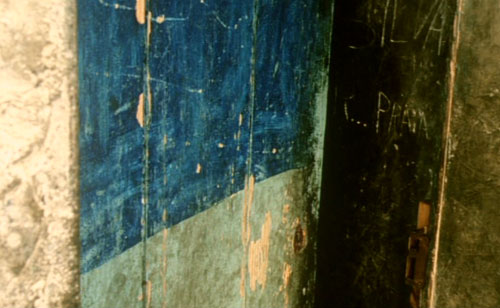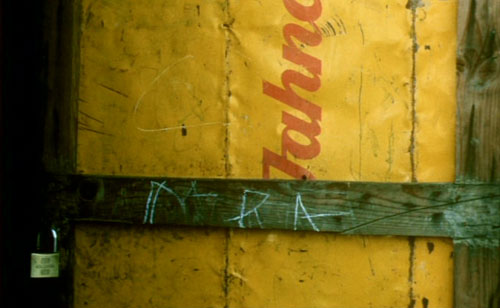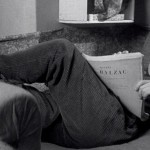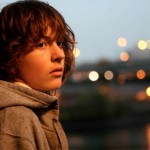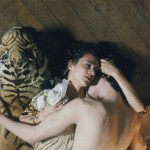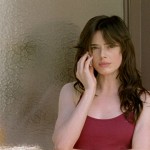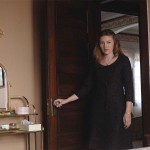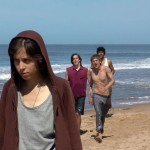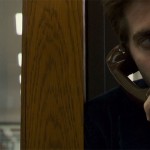Dir. by James Benning
Thirteen Ways of Looking at a Railroad (with apologies to Wallace Stevens)
1. As Documentary – The opening shot of RR divides the frame precisely down the middle. A train passes to our left, beginning at a vanishing point in the exact center of the screen, and on the right is a commercial street in a small American town. The road runs parallel with the tracks, and a few small buildings stand on its opposite side. Between the road and the tracks is a gravel area where several cars are parked, each one facing the road.
I remember these details because the train takes several minutes to pass — time during which we’re allowed to simply study the image. Little changes until, finally, a truck comes driving up the road from the bottom-right corner of the frame and parks in the gravel. However, instead of pulling forward a few feet of the spot and then backing into it, as I would have, the driver saves time by driving directly into the lot, swinging around in a wide arc and then pulling into his spot from behind. That’s when you notice that all of the cars are parked at the same slight angle, that they’ve all followed that same arc, that this is how things are done in this particular town.
2. As Autobiography – My father is a lifelong model railroader and train enthusiast who grew up in a town much like the one in Benning’s opening shot. Because I was raised in quiet suburbs, the sight or sound of a passing train never went unnoticed. On family vacations, we would go out of our way to see them, and he would patiently describe what we were looking at, snapping photos as he made his way around. Both homes Joanna and I have owned have been within earshot of tracks, so now the sound reminds me of laying in bed with her with the windows open. RR takes as a given that each viewer will share some form of this nostalgia.
3. As History – In one of the other 40 or so shots that make up RR, Benning takes a high-angle perspective on a rusted trestle spanning a wooded chasm. Even with modern metals and engineering, it’s an impressive feat. But the railroad is 19th century technology, and similar chasms had to be spanned a century-and-a-half ago.
4. As Visual Field – The day before the screening of RR, in another of the Wavelengths programs, we watched four of T. Marie’s Optra Field films, which use digitally-rendered lines of black and white to create a “visual mantra” that operates on the optic nerve. RR, at some times more that others, achieves the same effect. After watching a long freight train bisect the frame from right to left, for example, I discovered that my eyes had become so conditioned to that movement that, when the train finally exited, the distant landscape would appear to contract and sway for several seconds.
5. As Economics – Unless I’m mistaken, every train in RR is carrying freight. Perhaps as many as a third are pulling flatbeds loaded with shipping containers that were, presumably, lifted directly from the ships that had, presumably, trekked across the Pacific — all cogs in the machine necessary to bring us our stuff and keep the economy moving. Not coincidentally, we see only one face in the entire film.
6. As Canvas– While Benning has limited his subject, by and large, to rural areas of the American West here, there are tokens of urban life throughout the film. Nearly every train has been tagged by graffiti artists, and the beauty and variety on display is impressive. A moving gallery.
7. As Noise
8. As Music
9. As Americana — Benning also uses sound collage to invoke the railroad’s place in America’s cultural and political life. I don’t recall every clip, but the three I recognized are: the call of a baseball game (judging by the names I picked out, it would have been a playoff game from the mid-’90s), Eisenhower’s farewell address (with its famous warning against the growing military-industrial complex), and Woody Guthrie singing “This Land is Your Land.”
10. As Technology – In nearly every shot, the train splices through natural beauty. The film’s formal structure creates multivalent meanings in these images, though. This is human achievement and progress (if such a word can still be used without being overwhelmed by irony), but it’s also loss and tragedy.
11. As Design – Beauty and affect arise out of great design, I think, when a satisfying tension is achieved between order and disorder. Each gives meaning to the other. Benning’s greatest formal achievement in RR is at the level of individual shot, where he discovers impossible order in every composition. Few still images from the film are available, but I plan to create a couple line-drawing representations and add them here after I get home. He find symmetry, horizons, right angles, and Cubist-like intersections in the unlikeliest of places.
12. As Pedagogy – RR would be invaluable in a classroom. Along with teaching us how to look, generally, it teaches the fundamentals of composition, perspective, and montage better than any text I’ve read (not to mention its value as a doorway into discussion of any number of social, historical, and political subjects, as I’ve tried to demonstrate here).
13. As Farewell to Film – Benning has said RR marks the end of his 30-year career shooting on film. How fitting, then, that his final shot would be of a train coming to a stop. Since the Lumiere’s Arrival of a Train (1895), filmmakers have been fascinated by railroads. It’s even a running theme at TIFF this year, where both Kelly Reichardt’s Wendy and Lucy and Claire Denis’s 35 Rhums feature sequences at rail yards. RR ends with an extreme long shot of a freight train passing through a landscape dominated by massive wind turbines. The train cars, as they stream by, look uncannily like frames of film, and the turbines spin slowly like the reels of a projector. The train comes to a stop as the last few feet of 16mm celluloid work through the mechanism behind us. There are no end credits, so the print in the final seconds is scratched and scarred, a physical reminder of what we’ll lose in our digital century.

